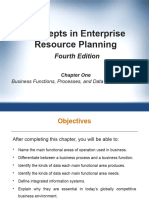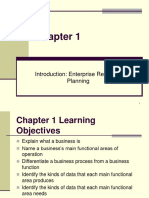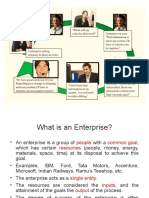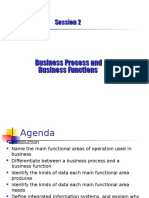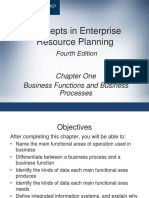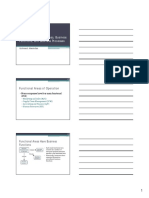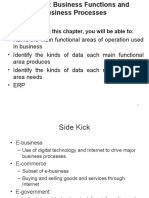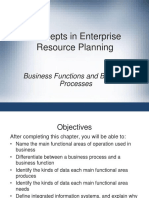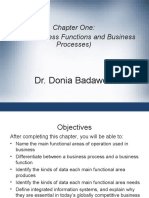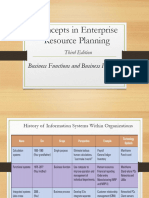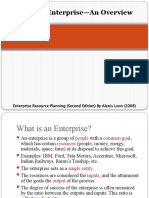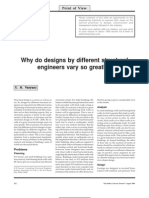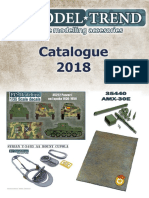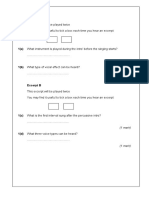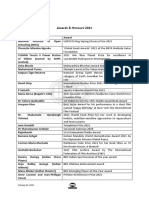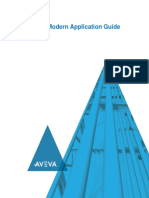0% found this document useful (0 votes)
9 views22 pagesLec 1
The document discusses Enterprise Resource Planning (ERP) systems, which are essential software for managing business processes across various functional areas such as marketing, supply chain, accounting, and human resources. It emphasizes the importance of integrating these functional areas to enhance communication and efficiency, ultimately focusing on the customer's perspective in business operations. The document also provides examples of business processes and the role of information systems in facilitating these processes.
Uploaded by
najlaaabutaleb40Copyright
© © All Rights Reserved
We take content rights seriously. If you suspect this is your content, claim it here.
Available Formats
Download as PDF, TXT or read online on Scribd
0% found this document useful (0 votes)
9 views22 pagesLec 1
The document discusses Enterprise Resource Planning (ERP) systems, which are essential software for managing business processes across various functional areas such as marketing, supply chain, accounting, and human resources. It emphasizes the importance of integrating these functional areas to enhance communication and efficiency, ultimately focusing on the customer's perspective in business operations. The document also provides examples of business processes and the role of information systems in facilitating these processes.
Uploaded by
najlaaabutaleb40Copyright
© © All Rights Reserved
We take content rights seriously. If you suspect this is your content, claim it here.
Available Formats
Download as PDF, TXT or read online on Scribd
/ 22


